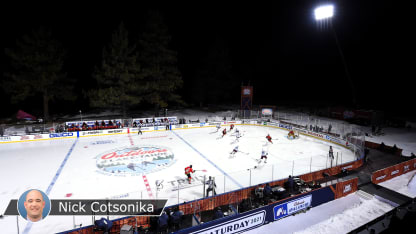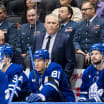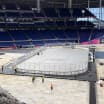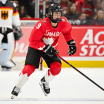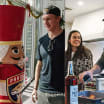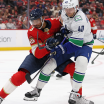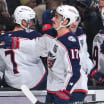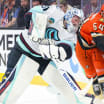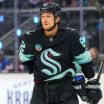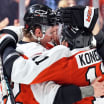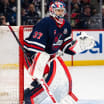The whole point was to not just make the best of a bad situation, but to transform a bad situation into something unique and memorable, to give fans a made-for-TV event with a wow factor.
"You can't have success," Commissioner Bettman said, "if you don't risk failure."
Welp, there was only one thing to do Saturday: Make the best of it again. Wow, anyway.
This is hockey. You overcome adversity, do what you have to do to get the job done. The NHL has dealt with so many delays and disruptions this season because of the coronavirus. Was it going to wilt because of the sun? There's a reason it brought lights.
The ice crew kept the ice covered until the sun set, then repaired it. The teams warmed back up and played two periods of hard hockey in seclusion. No crowd noise. No artificial crowd noise. Just the natural sounds of the game, music during stoppages and the Vegas mascot clanking his sword on his shield.
It was, well, night and day.
"It was pretty incredible," Avalanche defenseman Cale Makar said. "Kudos to the ice crew and everybody who put this whole event on for us. Obviously, it was a very tough day for those guys dealing with all the problems we had, but the ice was incredible tonight, and overall, it was just a really cool experience. You don't get the scenic views at night, but for us players, it was definitely still pretty special."
This summed up everything: NHL chief content officer Steve Mayer, the one overseeing the spectacle, was talking on the phone outside around 8 a.m. PT when he slipped on a patch of ice and hurt his right leg. He kept working through it all until 12 hours later, when he finally visited the X-ray tent.
Diagnosis: spiral fracture of the fibula.
In hockey terms, it was just a lower-body injury. He pulled his boot back over his swollen foot and hobbled to his station in time for the second period. Between the second and third, he was fitted for a walking boot and given crutches. He finished the game without missing a shift, and he'll be back Sunday too.
"It's unfortunate," he said, "but it's part of the game."
